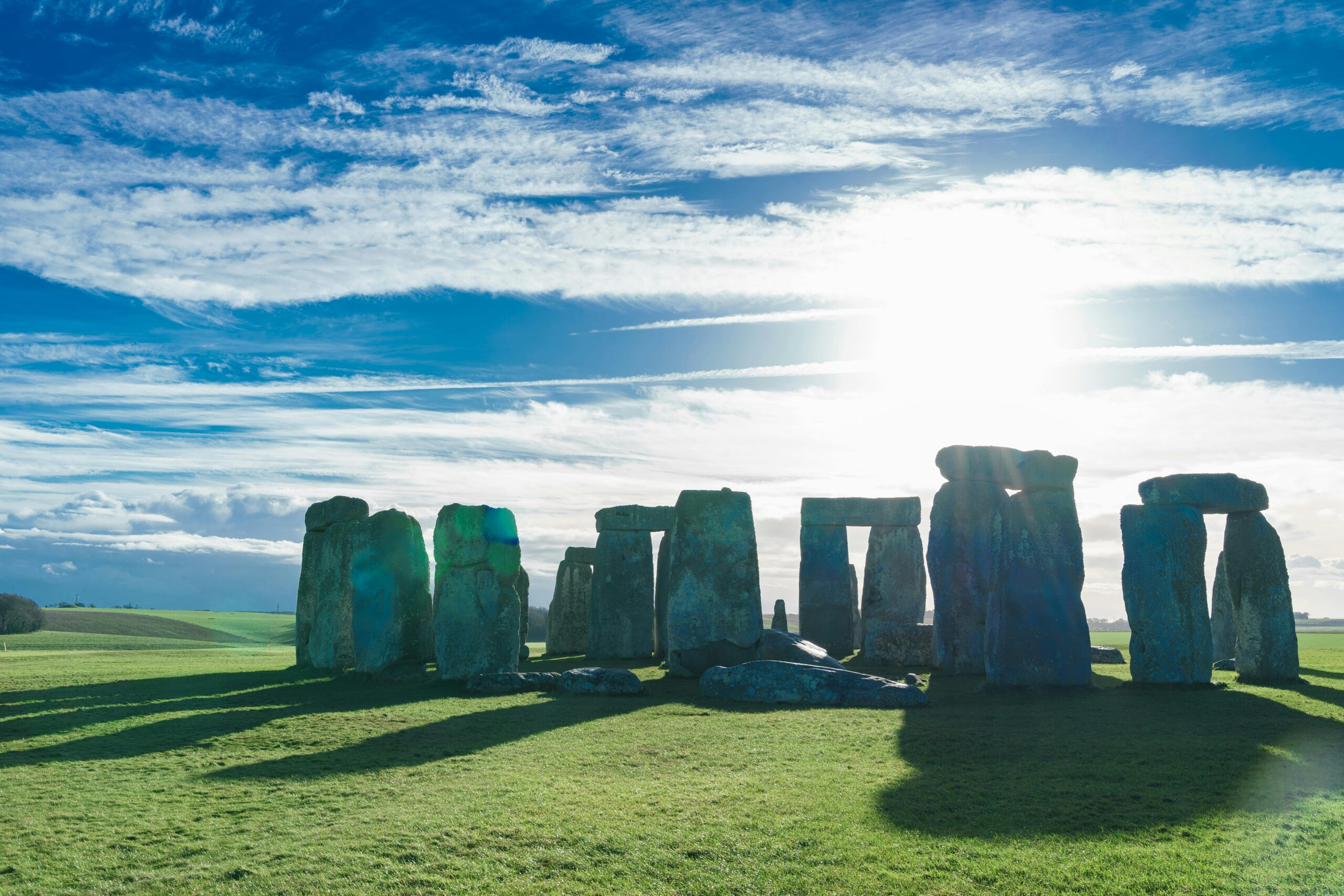Every June 21st, as the sun rises directly over the Heel Stone, Stonehenge transforms from a UNESCO World Heritage site into a vibrant stage for ancient rites, modern pageantry, and communal revelry. Druids, Pagans, curious travelers and music lovers flock to the prehistoric monument in Wiltshire, England, to mark the longest day of the year. This yearly convergence blends millennia-old tradition with festival flair—yet behind the sunrise selfies lies a story of heritage protection, local economy, and evolving spirituality.

A 5,000-Year-Old Stage for the Rising Sun
- Astronomical Precision: Built around 2500 BCE, Stonehenge’s axis aligns with the solstitial sunrise and sunset. On June 21st, the sun emerges in perfect symmetry over the Heel Stone as viewed from the center of the circle—an event our Neolithic ancestors likely marked with ceremony.
- Modern Druidry Revival: Since the 18th-century Romantic revival, self-styled Druids have led dawn rituals, invoking ancient Celtic deities and offering blessings for the land. Today’s ceremonies mix drumming, chanting, and poetry—designed as much for personal reflection as group worship.
Who Comes and Why
- Druid and Pagan Orders:
Groups like the Order of Bards, Ovates and Druids and the Glastonbury Order hold private rites before sunrise, often requiring membership or invitation. Their ceremonies emphasize harmony with nature, ancestral remembrance, and blessings for the coming year. - Open-Access Revelers:
The National Trust opens the Stonehenge site free of charge at dawn, welcoming up to 10,000 people. Free yoga sessions, drum circles, and acoustic concerts spill across the fields as attendees greet the sun together. - Tourists and Locals:
Many combine the solstice pilgrimage with a visit to nearby Avebury’s stone circle or Salisbury’s medieval cathedral. Local pubs, B&Bs, and food trucks cater to the crowds, turning solstice weekend into one of Wiltshire’s busiest tourism periods.
Balancing Celebration and Conservation
- Heritage Protection: Historic England and the National Trust enforce perimeter fencing and designated paths to protect the fragile turf and the stones themselves from erosion and vandalism.
- Crowd Management: Shuttle buses run from Amesbury and Salisbury to reduce traffic, while on-site stewards guide foot traffic and monitor safety. Drone-mounted cameras help track crowd densities, ensuring no one strays into restricted zones.
- Environmental Impact: Organizers stress “leave-no-trace” camping and provide portable toilets and recycling stations to minimize campsite waste. Noise curfews after midnight help protect local wildlife and residents’ peace.

A Global Phenomenon
Stonehenge isn’t alone in celebrating the solstice:
- Newgrange, Ireland: An even older passage tomb aligns with the winter solstice sunrise, drawing thousands to witness light flood its inner chamber.
- Chichen Itzá, Mexico: On the equinoxes—not the solstices—the Mayan pyramid of El Castillo casts a serpent-shaped shadow, but solstice events there also feature traditional dances and ceremonies.
- Uluru, Australia: Indigenous Anangu people hold small dawn gatherings at the base of the rock, emphasizing ancestral stories tied to the sun’s cycle.
Conclusion
Stonehenge’s solstice celebrations weave together archaeology, spirituality, community and commerce. As the sun’s first rays strike those iconic stones, thousands share a fleeting moment of unity—linking us to our prehistoric forebears and to one another. Yet the event’s success depends on careful stewardship: honoring ancient heritage while accommodating modern festivity. Each year, organizers refine the balance, ensuring that Stonehenge remains both a living ritual space and a protected monument for generations to come.
Frequently Asked Questions (FAQs)
Q1: Can anyone attend the solstice sunrise at Stonehenge?
Yes—public access is free before dawn on June 21st, but arriving early is crucial to secure a good spot.
Q2: Do I need a ticket or membership?
No ticket is required for the general free event. Private Druid and Pagan ceremonies are by invitation only.
Q3: What’s the best viewing spot?
The area just inside the eastern entrance gate offers a clear view of the Heel Stone alignment—but space is limited, so arrive before 4 a.m.
Q4: Is camping allowed on site?
Official camping near Stonehenge is restricted; most visitors stay at nearby campsites in Amesbury or Salisbury that operate solstice-weekend bookings.
Q5: What should I bring?
Warm layers, a blanket or low stool, a flashlight (ideally red-filtered), water, and a small snack. Respect signs and steward directions.
Q6: Are there child- and pet-friendly areas?
Children are welcome, but pets are not permitted on the protected site to maintain safety and conservation standards.

Sources AP News


